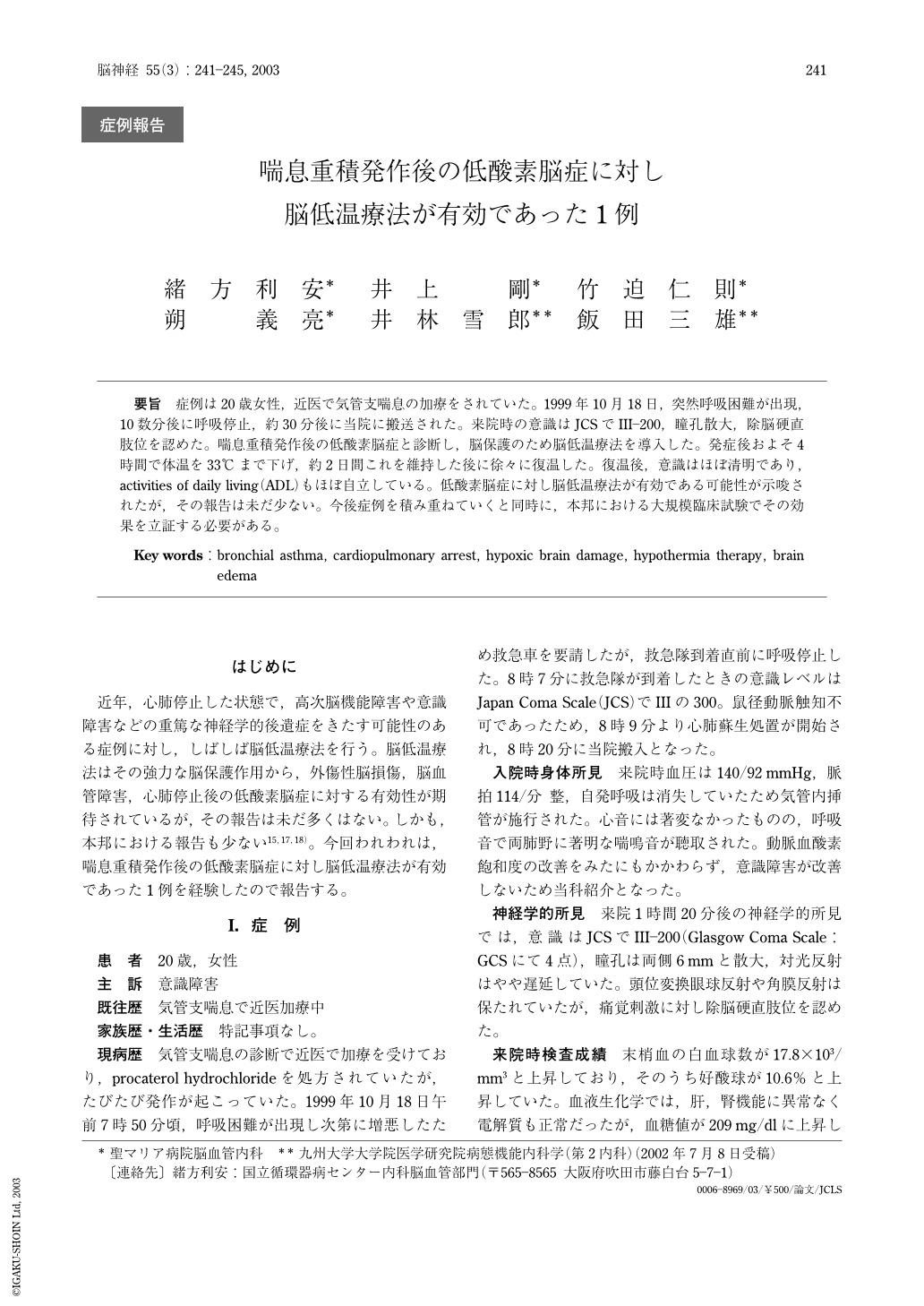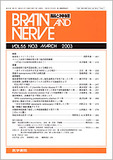Japanese
English
- 有料閲覧
- Abstract 文献概要
- 1ページ目 Look Inside
要旨 症例は20歳女性,近医で気管支喘息の加療をされていた。1999年10月18日,突然呼吸困難が出現,10数分後に呼吸停止,約30分後に当院に搬送された。来院時の意識はJCSでIII-200,瞳孔散大,除脳硬直肢位を認めた。喘息重積発作後の低酸素脳症と診断し,脳保護のため脳低温療法を導入した。発症後およそ4時間で体温を33℃まで下げ,約2日間これを維持した後に徐々に復温した。復温後,意識はほぼ清明であり,activities of daily living(ADL)もほぼ自立している。低酸素脳症に対し脳低温療法が有効である可能性が示唆されたが,その報告は未だ少ない。今後症例を積み重ねていくと同時に,本邦における大規模臨床試験でその効果を立証する必要がある。
We experienced a case of hypoxic brain damage induced by severe asthma who was successfully treated by hypothermia. A 20-year-old woman with a history of bronchial asthma suffered from severe respiratory distress and she stopped breathing for about 20 minutes. She was admitted to our hospital with respiratory arrest, deep coma, mydriasis and weak motor response to pain. She was intubated and mechanically ventilated with 100% oxygen. She was cooled down to 33℃ within 4 hours of her arrival. Her body temperature was maintained at about 33℃ for 2 days, and then gradually rewarmed. During hypothermia, PaCO2 was quite high(80-100mmHg), but the intracranial pressure was kept low. After hypothermia therapy, she became free from consciousness disturbance and there were no neurological disorders except for mild myoclonus. Hypothermia has a possibility of effective therapy for patients with hypoxic brain damage after respiratory distress.

Copyright © 2003, Igaku-Shoin Ltd. All rights reserved.


